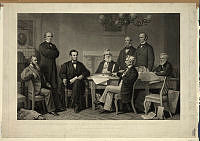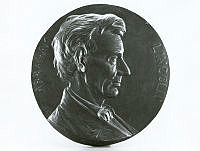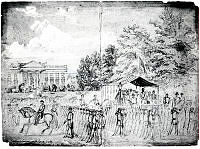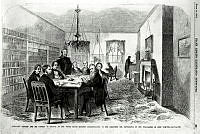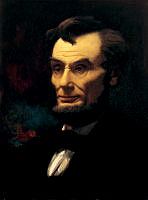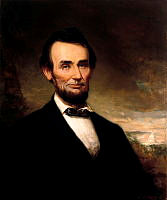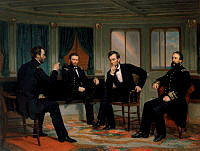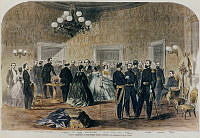Grand Reception at the White House, January 1862, White House Collection
This hand-colored wood engraving by Alfred R. Waud appeared in the centerfold of Harper's Weekly on January 25, 1862. Waud made a sketch in person at the reception, which was the basis for the engraving. Abraham Lincoln, tallest man present, welcomes guests near a White House doorway during a Grand Reception in January 1862. Secretary of the Treasury Salmon P. Chase and his daughter Kate greet Mrs. Lincoln, while several Union Army officers fill out the scene.
